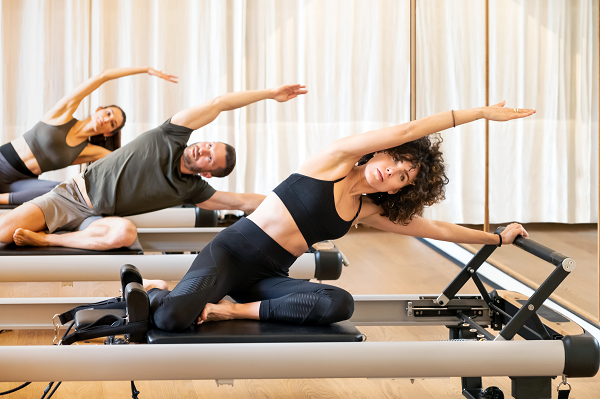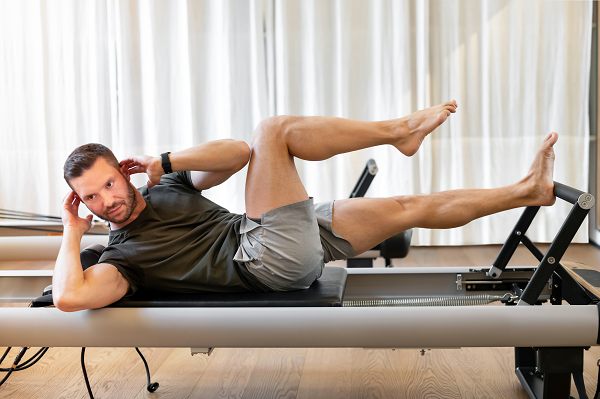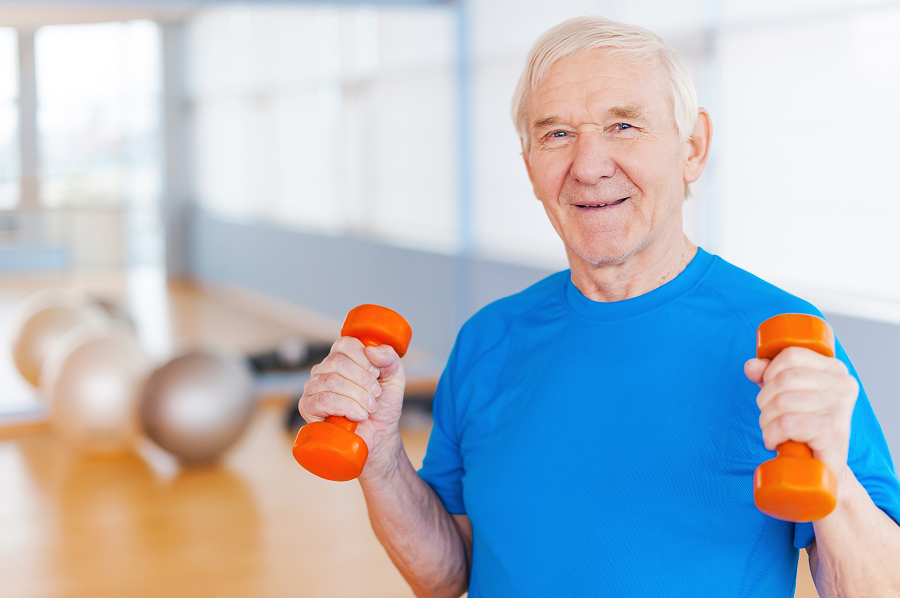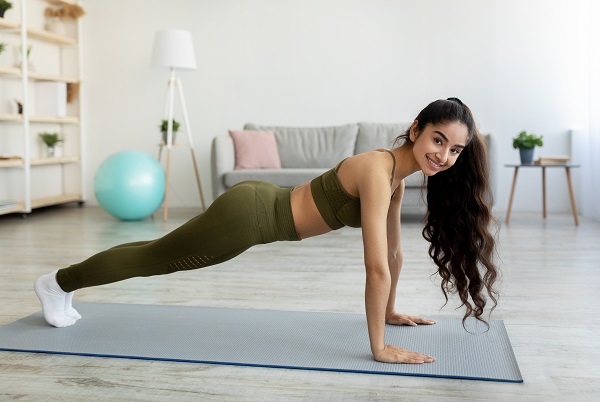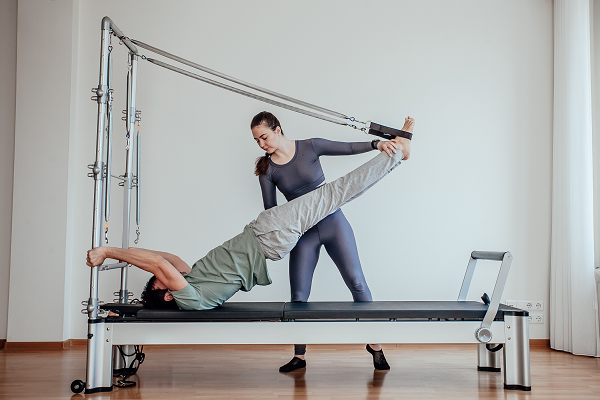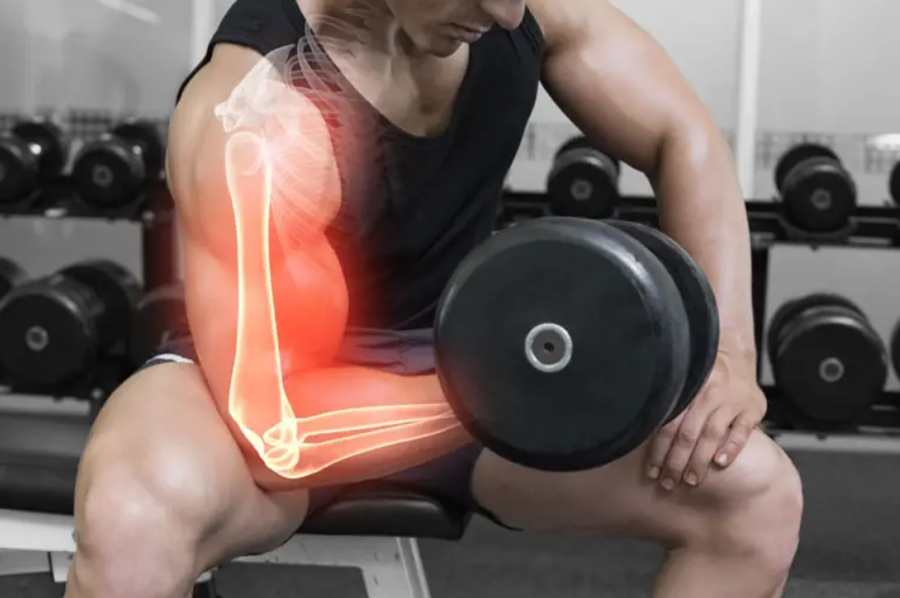Pilates is a form of exercise that has been around since the early 20th century. It was created by Joseph Pilates and can help to improve flexibility, strength, and endurance. Many people use Pilates to stay in shape, but it can also be for rehabilitation. However, it can also provide you with so many other benefits. So to help you understand a bit more about this exercise, this article will take a look at some of the basics of Pilates and how it can benefit your health!
Contents
What Is Pilates?
Simply put, Pilates is a system of exercises. The exercises can improve physical strength, flexibility, and posture. Pilates can be done using various equipment but most commonly uses a mat and small props such as resistance bands or weights. Pilates is often in group classes, but you can also do it at home with the help of online or DVD instructions.
Most people associate Pilates with core exercises, and a strong and stable core is essential for performing the exercises correctly. However, Pilates is much more than just core strengthening. Focusing on breath control and proper alignment means that Pilates can also help improve your posture and increase your flexibility.
The History Of Pilates
Joseph Pilates was born in 1880 in Germany. As a child, he was often sick and weak, so he turned to physical fitness to build his strength. He quickly developed a passion for movement and went on to train as a circus performer and boxer. In 1912, Pilates immigrated to the United States, where he opened a gym in New York City. There, he began to develop his system of exercise, which he called “Contrology.”
Pilates believed that physical and mental health were interconnected, and his exercises emphasized breath control and proper alignment. Over time, the Pilates method began to gain popularity, and it is now practiced worldwide by people of all ages and abilities. Today, Pilates is considered an essential part of many people’s fitness routines, and its holistic approach to health continues to inspire new generations of practitioners.
The Benefits Of Pilates
While Pilates is often associated with physical fitness, the benefits of the practice go far beyond just improving your strength and flexibility. For example, here is a list of some of the know benefits of Pilates:
- It can help relieve pain
- Improve your posture
- Increase your flexibility
- Help you to focus and concentrate
- Give you more energy
- Reduce stress levels
- Help improve your breathing
As you can see, Pilates offers a wide range of benefits aside from just physical ones, which is what makes Pilates such a popular form of exercise for people of all ages and abilities. Now let’s look at these benefits in a bit more detail.
Relieve Pain
Assuming your pain is muscular in origin and not caused by an injury or bone issue, there are many reasons why Pilates can be effective in alleviating discomfort. When you experience pain, your body often tightens up in response. This guarding can lead to further imbalances and compensation patterns that end up causing more pain.
Pilates focuses on lengthening and strengthening the muscles helps to undo these patterns of tightness and imbalance, which in turn can help to reduce or eliminate pain. In addition, Pilates exercises help improve circulation and increase the range of motion, which can also help reduce pain.
Improve Posture
Unlike other forms of exercise, Pilates focuses on lengthening and strengthening the deep abdominal muscles that support the spine. As a result, Pilates can help to alleviate pain and improve alignment. In addition, you can do Pilates exercises while lying down or sitting, which helps to reduce strain on the back and neck. With regular practice, you may find that your posture starts to improve, both inside and outside of the studio.
Increase Flexibility
With regular practice, you might be surprised at how much your flexibility improves. Pilates is a form of exercise that emphasizes controlled, deliberate movements. These movements help get a deep stretch in your muscles, leading to increased flexibility over time. In addition, as mentioned before, Pilates helps to improve posture and alignment, which can also contribute to greater flexibility. So if you’re looking for a way to feel more flexible, give Pilates a try.
Increase Concentration And Focus
Finding time to slow down and focus on your breathing can be difficult in today’s fast-paced world. However, the concentration required to perform Pilates exercises can help to quiet the mind and focus your thoughts. In addition, the controlled movements of Pilates help to develop body awareness, which can also improve focus and concentration. So if you’re looking for a way to improve your focus and concentration, Pilates may be a good option.
Improve Energy Levels
Just like your muscles, your energy levels can become fatigued from overuse. You can feel mentally and physically exhausted when you don’t give your body the chance to rest and recover. However, there are some easy ways to combat fatigue and boost your energy levels. One of these is exercise, specifically Pilates. Pilates can help to increase energy levels by improving circulation and oxygen flow throughout the body. So, if you’re looking for a way to fight fatigue, consider adding some pilates to your routine.
Reduce Stress Levels
In addition to improving your physical health, Pilates can also help to improve your mental and emotional well-being. One of the ways it does this is by helping to reduce stress levels. When stressed, your body goes into fight-or-flight mode, leading to various negative physical and emotional consequences.
However, exercise can help to combat these effects by releasing endorphins, which have mood-boosting properties. Pilates is a particularly effective form of exercise for reducing stress because it helps to center and focus the mind while also lengthening and strengthening the muscles.
Improve Your Breathing
Another critical aspect of Pilates is the focus it puts on breathing. Many of the exercises can help you improve your breathing. Proper breathing helps to oxygenate the blood and can also help to improve your overall mental state. Additionally, deep breathing can have a calming effect on the body, which can further help reduce stress levels. With regular practice, you may find that your breathing becomes deeper and more efficient. So, if you’re looking for a way to improve your breathing, Pilates is a great option.
How To Get Started With Pilates
If you’re new to Pilates, there are a few things you can do to get started. First, finding a class that’s right for you is essential. If you’re a beginner, look for a class labeled as “beginner” or “level 1,” ensuring that the exercises are appropriate for your fitness level. If you’re unsure which class to take, ask a certified Pilates instructor for advice. Secondly, it’s helpful to wear comfortable clothing that allows you to move freely.
You may also want to bring a mat or towel to class, as some exercises you do on the floor. Finally, listen to your body and go at your own pace. If an exercise feels too difficult or uncomfortable, don’t hesitate to ask the instructor for an alternative. With a little effort and patience, you’ll be doing Pilates like a pro in no time!
So, What Is Pilates?
By now, you should have a pretty good idea of Pilates. Pilates is a great way to improve your physical and mental health. It can not only help to increase your energy levels and reduce stress, but it can also improve your breathing and focus as well as so many other excellent benefits. Remember that if you’re new to Pilates, be sure to find a class that’s right for your fitness level and listen to your body. And most importantly, have fun! After all, that’s what Pilates is all about.
